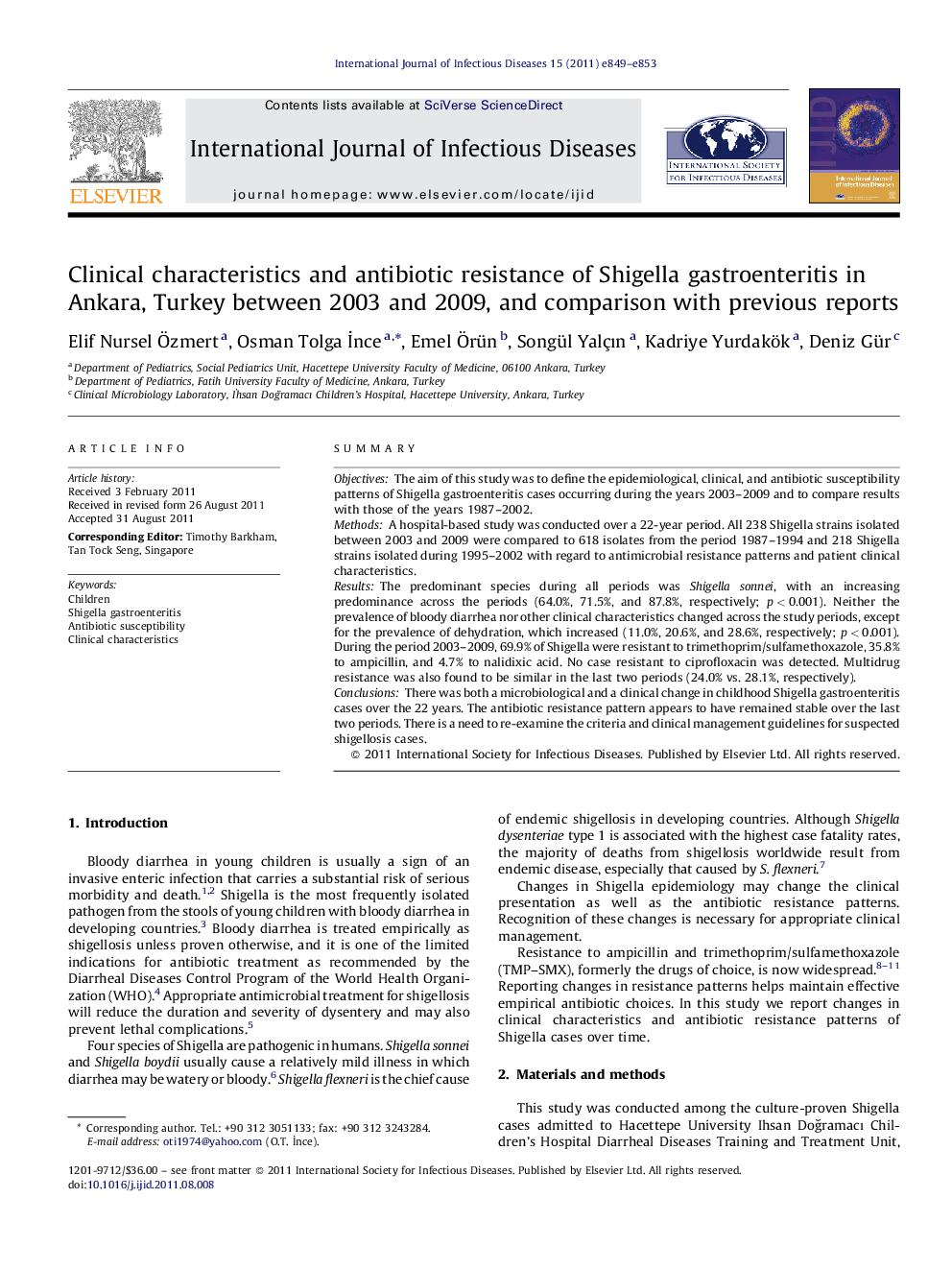| Article ID | Journal | Published Year | Pages | File Type |
|---|---|---|---|---|
| 3363280 | International Journal of Infectious Diseases | 2011 | 5 Pages |
SummaryObjectivesThe aim of this study was to define the epidemiological, clinical, and antibiotic susceptibility patterns of Shigella gastroenteritis cases occurring during the years 2003–2009 and to compare results with those of the years 1987–2002.MethodsA hospital-based study was conducted over a 22-year period. All 238 Shigella strains isolated between 2003 and 2009 were compared to 618 isolates from the period 1987–1994 and 218 Shigella strains isolated during 1995–2002 with regard to antimicrobial resistance patterns and patient clinical characteristics.ResultsThe predominant species during all periods was Shigella sonnei, with an increasing predominance across the periods (64.0%, 71.5%, and 87.8%, respectively; p < 0.001). Neither the prevalence of bloody diarrhea nor other clinical characteristics changed across the study periods, except for the prevalence of dehydration, which increased (11.0%, 20.6%, and 28.6%, respectively; p < 0.001). During the period 2003–2009, 69.9% of Shigella were resistant to trimethoprim/sulfamethoxazole, 35.8% to ampicillin, and 4.7% to nalidixic acid. No case resistant to ciprofloxacin was detected. Multidrug resistance was also found to be similar in the last two periods (24.0% vs. 28.1%, respectively).ConclusionsThere was both a microbiological and a clinical change in childhood Shigella gastroenteritis cases over the 22 years. The antibiotic resistance pattern appears to have remained stable over the last two periods. There is a need to re-examine the criteria and clinical management guidelines for suspected shigellosis cases.
